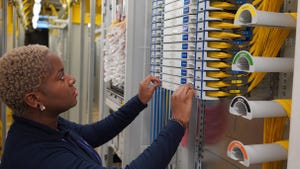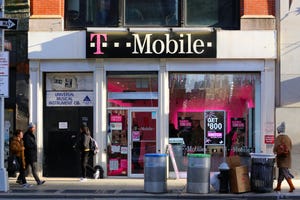India's Aircel Plots Path to 4G
Aircel CTO Sameer Dave highlights the technical challenges that India's operators face in launching 4G.

While it has already gained traction in other regions, 4G technology is still nascent in India. Bharti Airtel, the country's biggest mobile operator, has launched 4G services in a few circles (or service areas), while new entrant Reliance Jio is expected to launch services on a bigger scale later this year.
Although it plans to maximize profits from 3G before it starts to aggressively promote 4G, Aircel Ltd. , India's fifth-biggest mobile operator, has also joined the 4G fray. With 4G licenses covering eight of India's circles (or service areas), the operator recently launched 4G services for home and enterprise customers in six areas (Andhra Pradesh, Assam, Bihar, Tamil Nadu, Jammu Kashmir and Odisha).
In this email interview, Sameer Dave, Aircel's CTO, talks about the technical challenges Indian operators face when it comes to 4G:
Light Reading: What are the major technical challenges you faced in deploying a 4G network?
Sameer Dave: There are some key challenges, which the Indian telcos need to address. Backhaul connectivity needs to be significantly uplifted for successful LTE rollout. Increasing backhaul capacity is key to the proliferation of data in India; our aim is to prevent it from becoming a millstone around the neck in case we are unable to augment backhaul capacities for any reason.
Secondly, RAN technologies also pose a challenge. Optimal spectral efficiency in LTE requires a 5MHz contiguous band, whereas the present allocation in the 1800MHz band is split into many small chunks. On the other hand, re-allocation and harmonization is tedious as well as time-consuming as it involves consent and band vacation by non-telco users. Besides, carrier aggregation of Band 40 [2300MHz] TD-LTE and Band 3 [1800MHz] FD-LTE will pose a challenge as the network and device ecosystem are yet to mature. Currently, only a few countries like South Africa, Ivory Coast and Nigeria are using these bands.
LR: Are there major concerns in integrating 4G with 2G or 3G networks?
Dave: Traditionally, voice traffic is handled by legacy circuit-switched [CS] networks, while data traffic is handled by packet-switched networks. With LTE networks, expectations from the consumers are tilting towards using the same device, both for voice and data. Though it is widely acknowledged that LTE was originally designed as a data network, factors such as quality of service [QoS] and capacity gains cannot be overlooked for their contribution to providing seamless benefits to voice services. This is where LTE operators will use circuit-switched fall back to offload voice services to a CS operator and both operators will benefit. Soon VoLTE is expected to deliver voice services over LTE once the devices are compatible.
On the other hand, single radio solution [SRVCC] if used in a user's device will give advantages of cost, size and battery efficiency. In fact, an industry whitepaper mentions that SRVCC will seamlessly hand over voice calls when mobile users will move from LTE to non-LTE coverage areas. Without SRVCC, VoLTE call on a device moving out of LTE coverage will be dropped, since no operators currently support VoIP on 3G.
Want to know more about 4G LTE? Check out our dedicated 4G LTE content channel right here on Light Reading.
LR: Which variant of LTE (TDD or FDD) is likely to dominate in India a few years from now?
Dave: Sub-1 GHz bands [such as Band 8 and Band 20] are ideal for mobile broadband networks deployment since these bands provide good coverage and indoor penetration. The 1800MHz band is globally the most adopted band. Since these bands are widely used for LTE, they are also suitable for roaming and complemented by a robust device ecosystem. We currently own 20 MHz of spectrum in Band 40 [2300 MHz], which is suitable for LTE.
In India, being one of the most complex and dynamic telecom industries, all new spectrum allocations are technology agnostic and provide opportunities to deploy 3G and 4G in various possible bands. However, in our country, both TDD and FDD will be used to meet the diverse bandwidth requirements.
Operators in India can deploy carrier aggregation across 800MHz and 1800MHz FD-LTE, complementing that with 2300MHz TD-LTE. LTE also supports variable bandwidth operations, including 1.4MHz and 3MHz as narrowband options, and so operators are evaluating these to enable LTE within the available spectrum using narrowband deployment.
Initial LTE coverage deployments are most suitable in the 800MHz and 1800MHz FDD bands, but for metro areas the 2300MHz TDD band provides better capacity and frequency re-use. We feel both TDD and FDD will co-exist.
LR: How are the business models changing with the advent of new technologies like 4G?
Dave: India is a very dynamic cellular market and we still see large numbers of subscriber additions in 2G. 3G is also still in its development phase and has not yet "maxed out." The 4G ecosystem is also gradually developing. Having said that, per-megabyte costs are still very low due to immense competition to lure new subscribers. That means operators can plan to get decent ROI on their investments only after reaching a particular subscription threshold. Aircel is committed to offering a little extra to its customers with world-class and innovative data services at the most affordable price points.
LR: Are you experimenting with new technologies like SDN/NFV? What is their relevance in the Indian market?
Dave: SDN/NFV are shaping the future of telecom networks and many OEMs across the globe are framing and evaluating specification based upon limited trial results. At Aircel, we want to maximize utilization of our existing network infrastructure with all available technology options. The market for SDN and NFV is still maturing, and we are aligned with the industry development roadmap and would like to experiment and fit these technologies in our commercial networks.
— Gagandeep Kaur, contributing editor, special to Light Reading
Read more about:
AsiaAbout the Author(s)
You May Also Like




.jpg?width=300&auto=webp&quality=80&disable=upscale)







